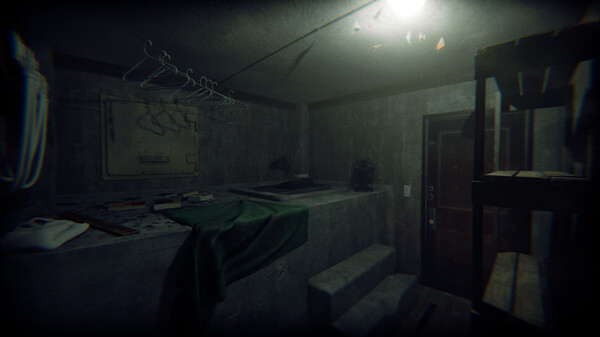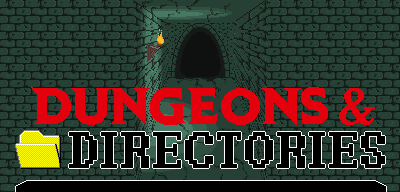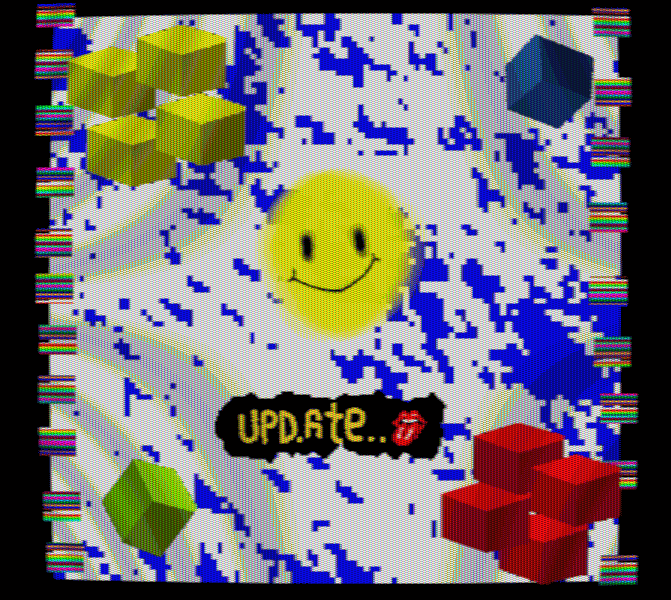
Wikipedia
This is about the horror of liminal spaces, and the intrinsic surrealism of our digital world… That beautiful awful loneliness of existing in the electric void of shared virtual fantasies that video games are.
Video games are the closest thing that we have to existing in someone else’s dream. Carefully constructed fantasies that we share with players. These are our fever dreams, both pleasant and awful.
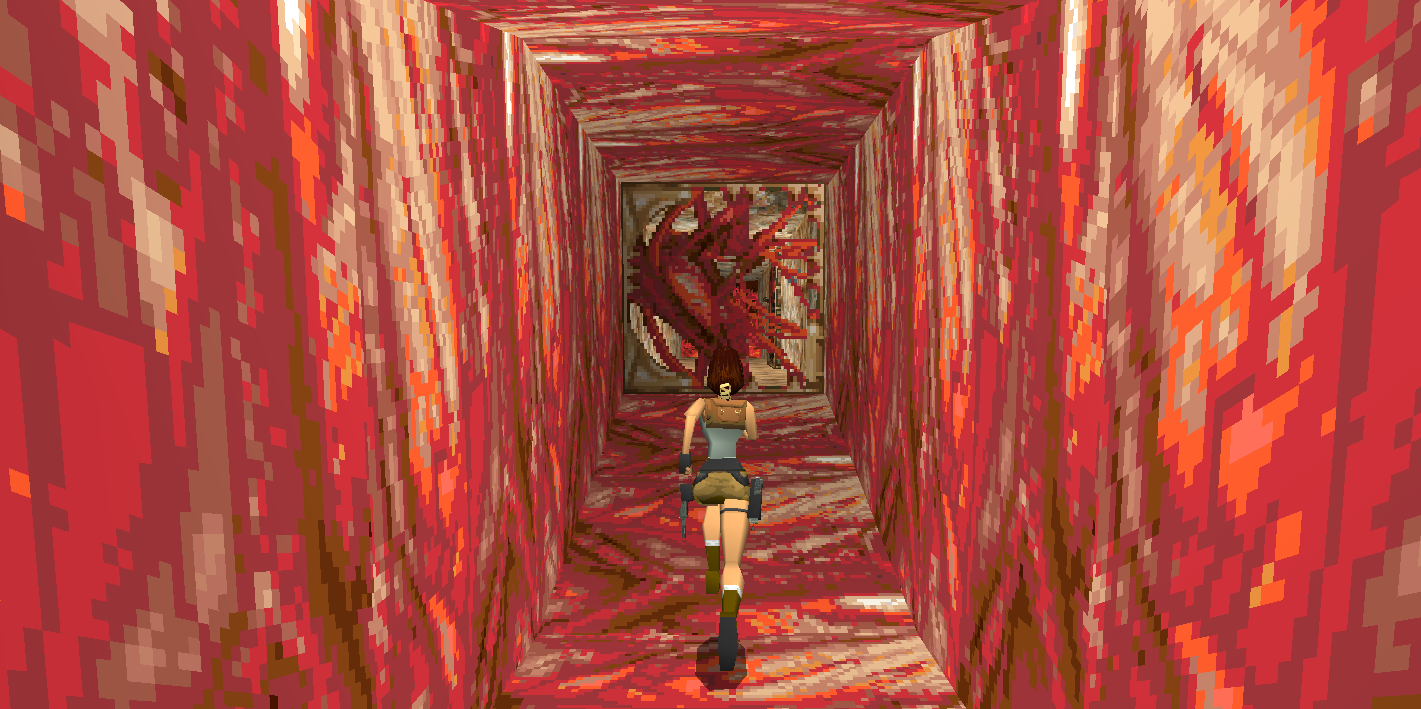
Tomb Raider 1, Level 14: Atlantis
Computers lend themselves well to horror, surrealism, or absurdist expression, because (at heart) the concept of computers does not make sense.
The fact that we created this very virtual, non tangible, inherently ephemeral and transitional “world” outside of our physical reality is fascinating to reflect on. None of this is real. This post isn’t really either. It exists only as 0’s and 1’s, unless you print it out. Then it’s part of a tangible reality.
Our virtual reality is an electronic ephemeral concept that is something of an expression of our collective conscience, for good or bad… but so much of this “not real” is vital to our daily existence.
If you look at it that way, then we’ve created a weird dependent symbiosis between computers and people. Computers are strange things, easy to break and prone to malfunction, but behind that malfunction lies the realm of our beautiful and often terrible virtual nightmare.
Since working on BlueSuburbia, I can’t get enough of that feeling. If you’ve encountered it at any formative part of your digital life then you know what I mean!
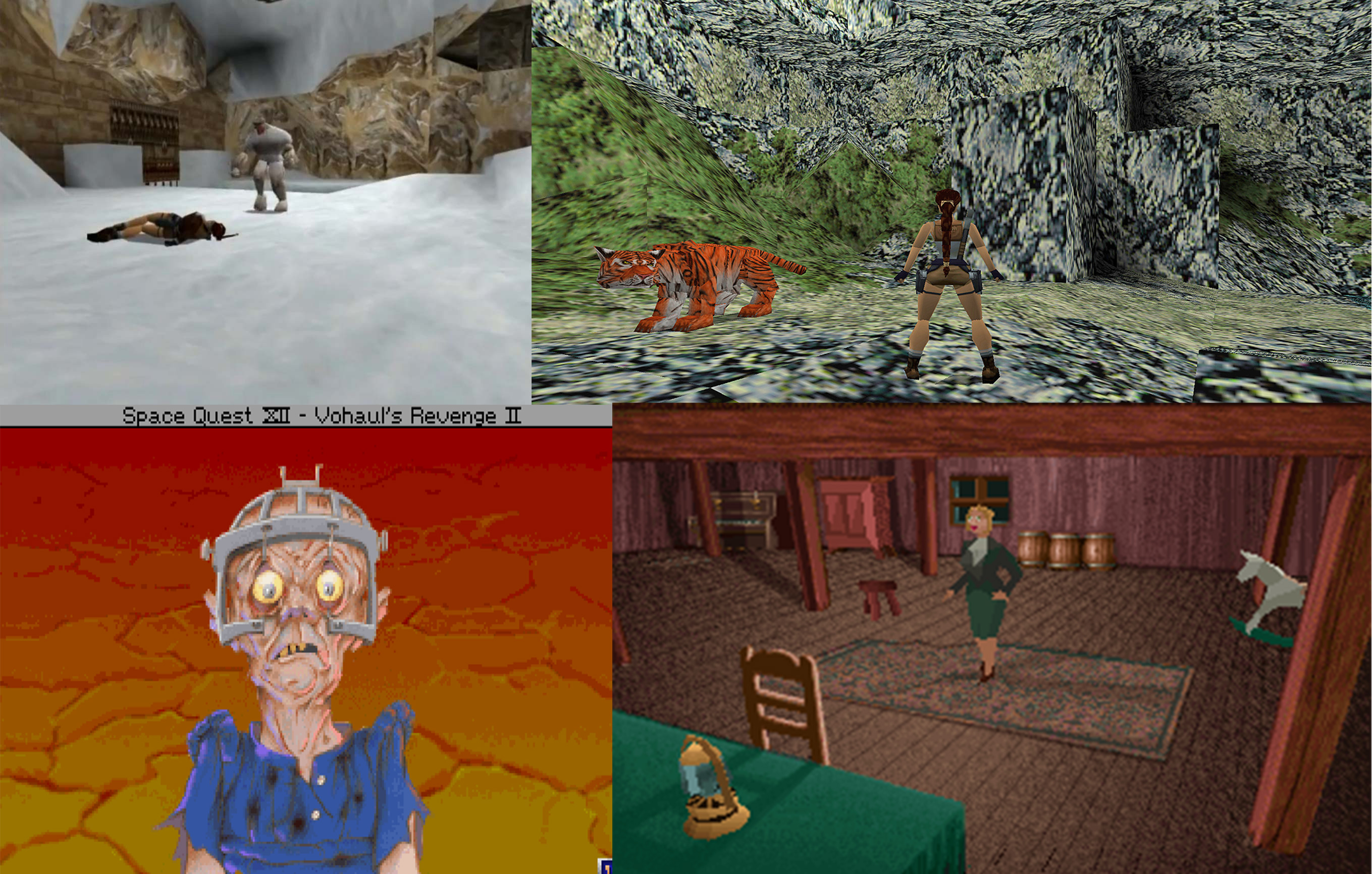
Old school video game terrors: Tomb Raider Yetis, Tomb Raider’s Great Wall level, the sad zombie in Space Quest XII, and Alone In the Dark (original)
My go-to games when growing up were PC games. DOS games, or demos collected from demo disks.
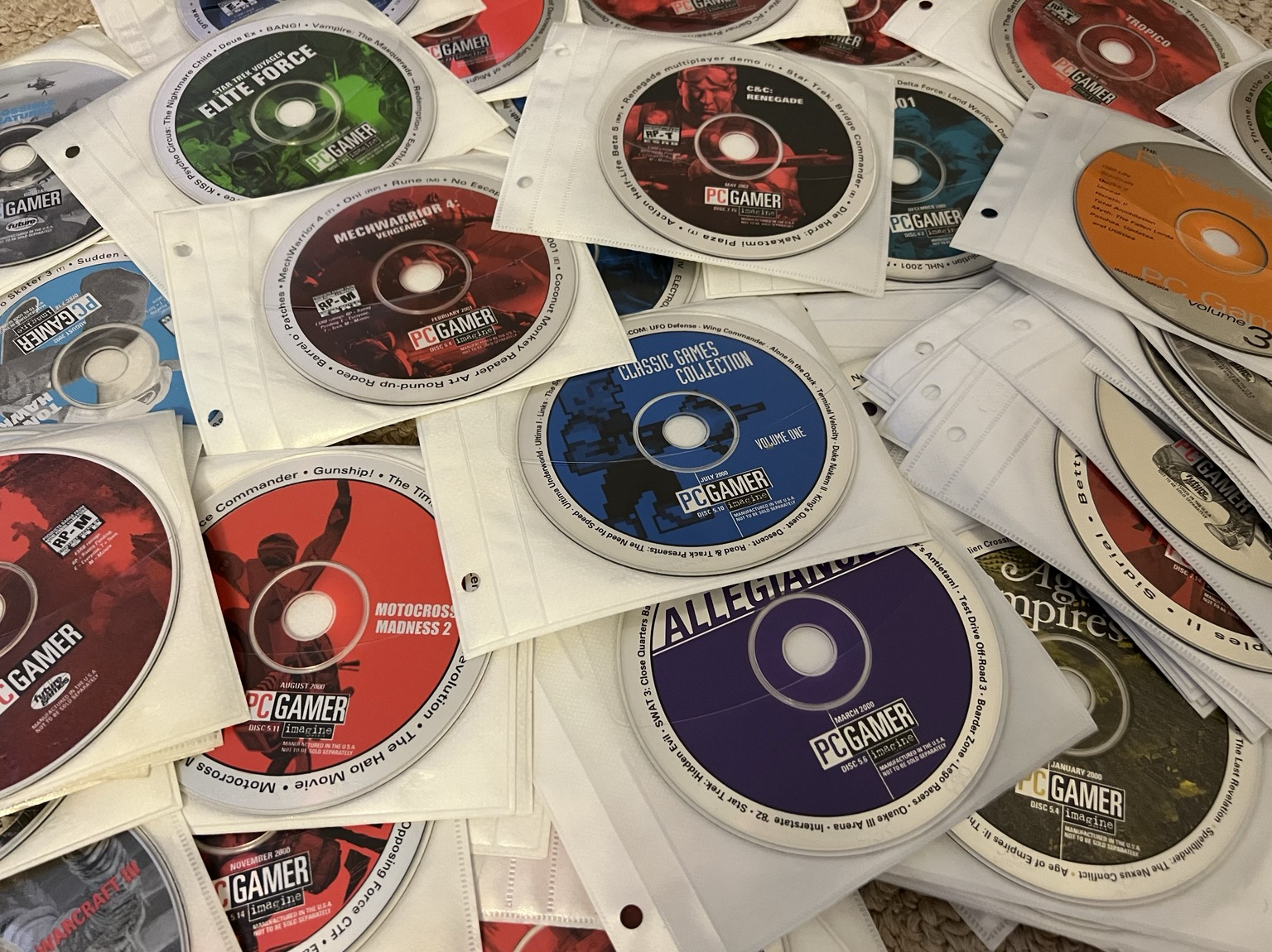
(Tangent: I recently found these again and was over the moon! So many memories!)
The iconic low-fi graphics we now relegate to “nostalgia” is something I remember viewing as often terrifying. It had a unique “I’m alone and I don’t want to be in this place” feeling.
The lack of detail meant you could read so much more into it, especially fear.
My initial experience with games like Alone in the Dark and Tomb Raider often still surpass anything today (I speak for myself, that’s not a generalization).
Maybe we rely on too much when we place so much value on visual fidelity? Maybe horror is elsewhere?
Despite the incredible depth of detail AAA games today have, I think the older lack of detail, the hidden things, what remains unsaid… is why horror in games remains such a unique experience. This is why I think the PS1 era style horror boom is so popular right now. I wrote about that here: Exploring the beautiful world of indie horror games (why work from smaller devs, and indie devs, is so meaningful)
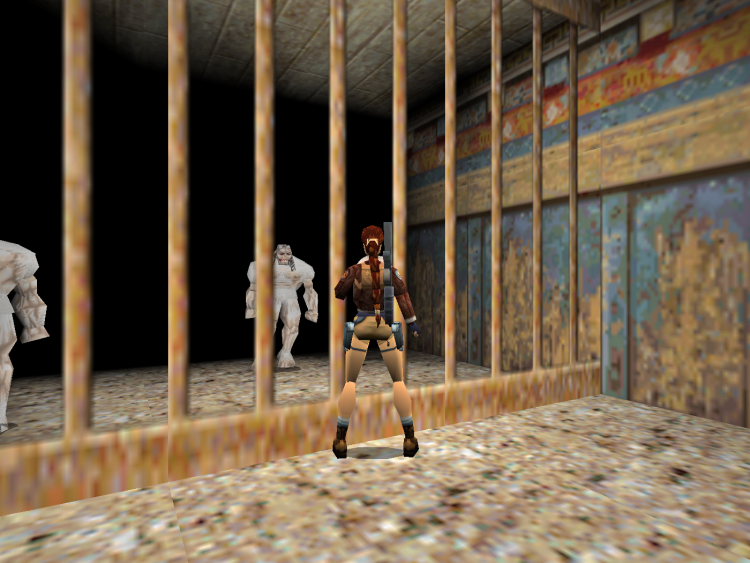
The loneliness of Tomb Raider’s Tibetan Foothills was awful… Or even the dread of having to go into Tomb Raider 2’s Yeti Cages is something that will always highlight how terrifyingly lonely crawling through video game spaces can be. There could be more in that darkness than just low-poly Yeti’s! What if!?…
“This is an indie horror game with first-person puzzles. Terror and fear have enveloped the city. The maniac has returned. You sneak into his lair to try and stop him before he goes too far…”
The terrifying menace of loneliness is a unique quality to three-dimensional spaces. If I watch a horror movie, I am with the protagonist. I am a witness, but not alone. If I’m in a video game, then I have to be the protagonist. I am alone.

Fears to Fathom – Ironbark_Lookout
“Jack Nelson, a 24-year-old fire lookout, transferred to a new outpost. As he settled into his new home, he couldn’t shake the feeling that something was off, little did he know what was transpiring down in Ironbark State Park.”
Our digital horror is electric nightmares, embracing the wacky brokenness of machines, and what remains in our collective memory after it becomes nostalgia… This is what existing in these surrealist nightmare is all about.
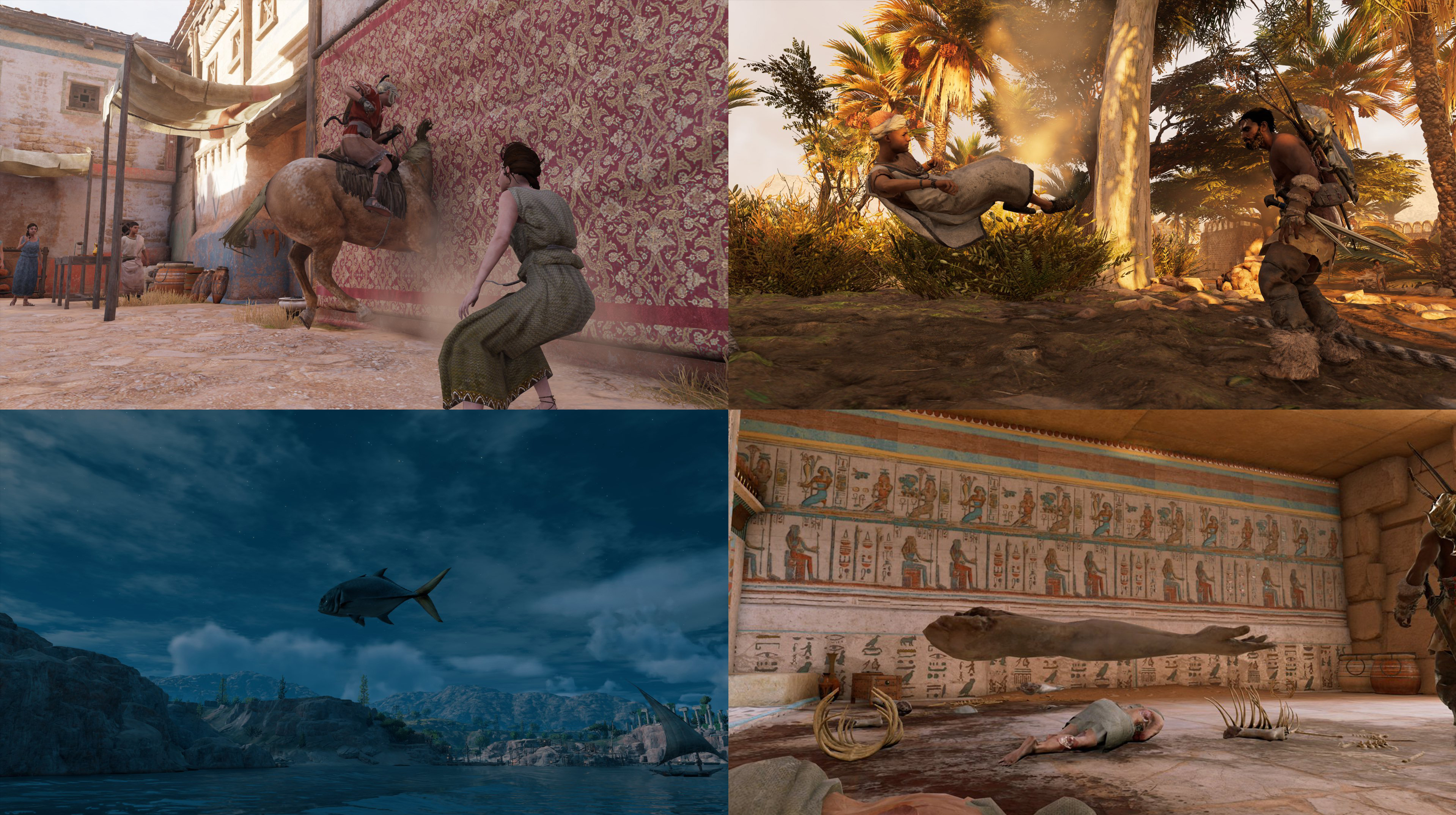
Via Assasin’s Creed bug photography Twitter Video games sure get unsettling when their carefully crafted worlds bug out.
I’m often humored that video games seem so naturally broken and buggy. We have to work really hard to make them not be that way. So much work is put into making cloth behave like cloth (not clip through a body, which if it happened IRL would be true horror), or keep characters dressed (no spontaneous nudity), or keep weird bugs from happening (try any open world AAA game on launch day and you know what I mean)… So much work is done to get games to behave. They are naturally absurdist, ridiculous, surrealist…
Horror here is when we embrace their natural state: really weird fever dreams.
Video game horror is more than a next-gen high quality aesthetic. It doesn’t have to have rich evocative three-dimensional environments. It can range from strange drawing apps, overblown malfunctioning UI’s, or using your actual file browser to put you into a dungeon like Dungeons and Directories does. (Which I’m overjoyed to know about.)
When I made Cyberpet Graveyard I looked everywhere for similar experiences that use the way a computer functions (anything native to a desktop for example) to tell a story. Dungeons and Directories is a creative example!
Computers are fantastic places, and games are the accumulation of our digital fantasies. It doesn’t have to be in carefully built and curated worlds, it can also be the way we just exist in our daily digital lives that becomes the platform for playing one.
It doesn’t just have to involve an explicit definition of play. It can be something that’s just strangely different like the animated gif drawing program LIPSU.
LIPSU is one of the coolest, wackiest, loudest, drawing tool ever, with a UI that’s equally as astounding. I can’t believe more people aren’t talking about it. Make art with beautiful trash and get wild animated gifs reminiscent of a digital apocalypse. It’s robots dreaming of electric sheep beautiful. The menace of being trapped in a terrifyingly glitchy app that you draw in with uncontrollable digital effects is an amazing experience.
If you look at it all in these contexts, then it begs the question: what is our digital reality?
That having been said…
Our digital spaces are ephemeral. Nothing lasts. Not even the games we make will be playable forever. This digital art is a constant waterfall of new games, lost games, forgotten games, and “there are too many games” arguments… Words like liminal spaces, transient spaces, dreamscapes, and fever dreams, best describe how it’s like to exist as a digital artist.
It’s all so breakable and easily lost.
Playing games involves passing through uncounted virtual environments, much like existing in the real world does. You are always passing through a space… all these spaces, the in-between parts of the journey you don’t really pay attention to. There’s something beautiful to the idea that so many of these game spaces, that were so relevant as we were experiencing them, are often lost on us. Like dreams, we forget once we wake up… Or, in this case, close the program.
After enough time, the game might not be accessible anymore… virtual worlds slowly deteriorate and die, servers are shut down. We lose virtual spaces all the time. They are ghosts.
To me, it’s beautiful food for thought to think about how that fits into horror. What are video game spaces to our collective unconscious?
“”Father’s Day” – a psychological thriller that is a spin-off and prequel to the game “Find Yourself”. The dream of living happily ever after was destroyed after Phil lost his wife and son. Obsessed with the desire to return them, he develops a plan.”
There’s a lot that hides in these digital shadows.


